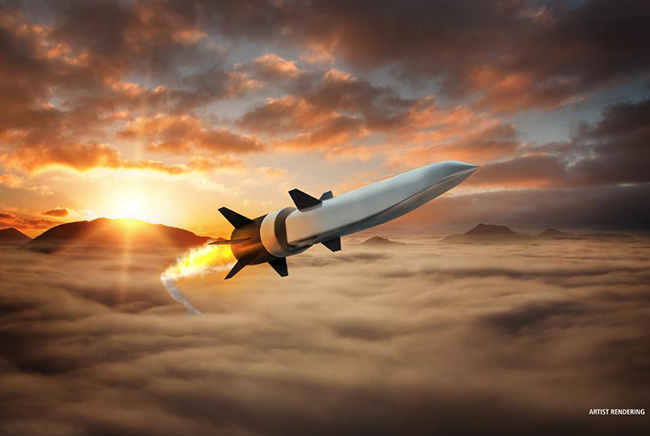The Air Force is spearheading development of the Defense Department’s first hypersonic cruise missile, which would complement another weapon already underway.
The service on April 27 reached out to industry to seek input on a “solid rocket-boosted, air-breathing, hypersonic, conventional cruise missile” that can be launched from existing fighters and bombers. Air Force acquisition boss Will Roper told reporters April 29 the program will leverage work already done by the Defense Advanced Research Projects Agency and Air Force Research Laboratory, and partner with industry to speed the design into production.
“I think we can go fast,” Roper said. “We would absolutely pursue this the exact same way we did with [the Hypersonic Conventional Strike Weapon and Air-Launched Rapid-Response Weapon] as a rapid prototyping … program which is not encumbered by unobtainable requirements.”
This effort could build on DARPA’s Hypersonic Air-Breathing Weapon Concept, a joint project with the Air Force, Lockheed Martin, and Raytheon to demonstrate the propulsion and other design specifics that would enable scramjet-powered hypersonic cruise missiles. HAWC was expected to fly for the first time around the end of 2019 or early 2020.
USAF is already pursuing ARRW, a boost-glide weapon in development at Lockheed Martin that would be shot high into the atmosphere and then use the energy from its rocket to fly toward its target. In contrast, a cruise missile would fly lower over shorter distances because it needs to “breathe” air to keep moving.
“I have been exceptionally impressed by what new manufacturing techniques are enabling scramjet design, fabrication,” Roper said. “I entered this job thinking scramjet would probably be a step behind boost-glide and I’m delighted to say that I was wrong. Scramjet is much more mature and ready to go than I originally thought.”
Hypersonic systems can move five times the speed of sound or faster. The U.S. already owns weapons that fly that quickly, but this new class of hypersonic weapons is thought to maneuver more easily in flight and be harder to detect.
While Roper wants to move quickly on the cruise missile, it would come after ARRW is ready. ARRW is slated for operational use starting in 2021, and cruise missile designs would not reach their preliminary design review until the fourth quarter of fiscal 2021, according to the Air Force’s April 27 notice.
The Air Force has so far discussed adding hypersonic weapons to the B-1, B-52, and F-15.
Roper said he is waiting for input from industry to determine how quickly the cruise missile could be fielded. He added that the program is appealing because it would support a different supplier base than ARRW and lend itself to a different mission set. Some argue for hypersonic weapons as a quick-hit tactical capability, while others see them as a strategic threat.
“Systems that operate at hypersonic speeds … offer the potential for military operations from longer ranges with shorter response times and enhanced effectiveness compared to current military systems,” according to DARPA. “Such systems could provide significant payoff for future U.S. offensive strike operations, particularly as adversaries’ capabilities advance.”


